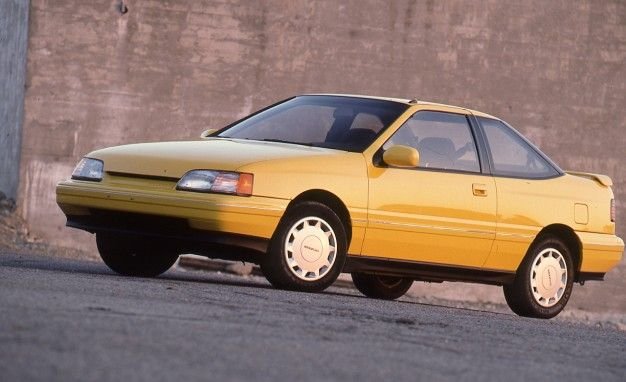
In the late 1980s, South Korea’s auto industry was rapidly evolving, with Hyundai leading the charge. The company was known for affordable, practical vehicles, but it lacked a sporty model that could appeal to younger drivers and compete with the compact coupes from Japanese automakers like Honda and Toyota. This led to the development of the Hyundai Scoupe—Korea’s first attempt at a sporty coupe.
The Origins: Hyundai’s Desire for a Sporty Image
Before the Scoupe, Hyundai focused on building reliable, mass-market cars. However, to grow its brand appeal, Hyundai needed a car that could bring excitement to its lineup. The concept of the Hyundai Scoupe (pronounced “Scoop”) was born as a sporty variant of the Hyundai Excel. It aimed to combine affordability with a fun driving experience.
The Birth of the Hyundai Scoupe (1990)
Launched in 1990, the Scoupe (a blend of “Sport” and “Coupe”) was Hyundai’s first two-door coupe. While it wasn’t a full-fledged sports car, it was a step toward creating a performance-oriented vehicle.
Key Features of the First-Generation Scoupe (1990-1992):
- Based on the Hyundai Excel, using the same front-wheel-drive platform.
- 1.5L Mitsubishi-sourced engine, producing around 81-92 horsepower.
- Lightweight body, making it relatively nimble despite modest power.
- Available automatic and manual transmissions for a fun driving experience.
The first-generation Scoupe was well-received, particularly in markets like the U.S. and South Korea, where buyers were looking for affordable sporty cars.
The Game Changer: The Second-Generation Scoupe (1993-1995)
In 1993, Hyundai introduced an updated second-generation Scoupe with major improvements, including:
- New Hyundai-built “Alpha” engine – This was Hyundai’s first in-house developed engine, a milestone in the company’s history.
- 1.5L turbocharged version – Hyundai’s first turbocharged production engine, producing 115 horsepower.
- Refined exterior styling – Smoother, more aerodynamic design.
- Improved handling and performance, making it more competitive with rivals like the Honda CR-X and Toyota Paseo.
The 1.5L turbocharged Scoupe was especially notable because it showcased Hyundai’s ability to produce performance-oriented technology without relying on outside manufacturers.
The End of the Scoupe and Its Legacy
By 1996, Hyundai discontinued the Scoupe and replaced it with the Hyundai Tiburon (also known as the Coupe in some markets). The Tiburon was a more refined and powerful successor, continuing Hyundai’s push into the sporty coupe market.
Why the Scoupe Was Important:
- Hyundai’s First Sporty Coupe – It marked Hyundai’s first real attempt at a sporty image.
- Introduction of Hyundai’s Own Engine – The second-generation Scoupe featured the first Hyundai-built engine, paving the way for future models.
- Turbocharged Performance – It was Hyundai’s first turbocharged production car, setting the stage for future high-performance models.
While it may not be as well-remembered as later models like the Tiburon or Genesis Coupe, the Scoupe was a crucial stepping stone for Hyundai’s development of sporty cars. Today, it remains a cult classic among enthusiasts who appreciate its role in Hyundai’s history.
Conclusion
The Hyundai Scoupe was a bold step for Hyundai, proving that the brand could build something beyond economy cars. It laid the foundation for future performance-oriented vehicles and helped Hyundai transition into a global automotive powerhouse.
